Introduction
Methodology
Results and Unique Aspects of the Project
Conclusions
Introduction
Wikipedia and its Place in the Education System1
Wikipedia, the biggest compilation of open information in the world, is considered today no less reliable than classic encyclopedias,2 and is widely used by the general population as a source of information that is accessible, relevant, and up to the date.3 For students and scholars, Wikipedia is used extensively as an initial reference source to locate pertinent information for scholastics, as well as for personal use.4 Though denounced initially by many teachers and academics as unreliable, in recent years academics have partnered with Wikipedia, and have even made a joint effort to examine how to best incorporate Wikipedia use in high schools and in higher academics.5 That these two bodies seek cooperation is due to the fact that, contrary to popular belief, there is much that they stand to gain from partnership. Academia is the designated body used for exploring, assembling, and distributing knowledge gained by thorough examination by individual experts; Wikipedia sources wisdom from among the masses, with a goal to make it as accessible as possible for everyone, without cost.
Teachers are also among Wikipedia’s loyal users, but that being said, they are mostly passive users, consuming from the wealth of information rather than contributing to it.6 The education system tends to perceive Wikipedia as an adversary to meaningful learning, and tries to prevent students from using it. 7What results is an absurd situation whereby students and teachers alike make extensive use of Wikipedia, but because of the opposition to it, it is not used in an informed manner that supports learning by being an integral tool for developing research, composition, editing, and collaborative learning abilities for various educational systems. In Israel as well – where the number of contributors to the Hebrew Wikipedia website is relatively high compared to the number of Hebrew speakers 8–although many attempts have been made towards inculcating Wikipedia into the educational toolbox, a significant contrast remains throughout the entire educational system between the intensive usage of Wikipedia by teachers and students, and the legitimacy it is granted, as well as the role it plays in education. 9
Holocaust Remembrance in the Israeli Education System
The relationship between the Israeli identity, the collective consciousness of the Jewish people’s past, and the memory of the Holocaust – is one that is complex and emotionally, and a wide range of social, political, educational, and public debates that take place in Israel tend to bring up this topic relatively early on in their discussions 10 Over the years, the way in which the memory of the Holocaust has been handled has changed, and a readiness to deal with it has also begun to take hold.11 The Holocaust remains a historical trauma that resides within the consciousness of a vast portion of the Israeli population, as individuals, as families, and as communities. This trauma affects the collective state of emotion, and tends to surface and intensify during moments of crises. 12
Many studies have been done on how trauma experienced during the Holocaust is passed on to second-generation survivors, and even on to third-generation survivors. 13 Second-generation survivors generally inherit their parents’ trait of repressing the feelings and the memories of the traumatic event that regularly hovered in the background of daily life. 14 Third-generation survivors carry a certain characteristic of dealing with the Holocaust that is unique to them: It is typically expressed by an attempt to try and confront their family’s history, from which their parents had tried to distance themselves, calling it taboo. This desire sometimes even manifests itself as an intense obsession to find out what had happened to their family, and to attempt to comprehend it. 15
So too did education in Israel about the events of the Holocaust go from being marginalized to becoming a point of focus, with a stress on students developing a meaningful connection to its outcomes. There is also a stress put on understanding the depth of the Jewish people’s history, and the stories of individuals who underwent the trauma. Holocaust education in Israel is the only school subject that is explicitly mentioned in the law books as a required subject to be taught.16 Holocaust education personalizes and enriches the way in which the individual connects to the national memory – through learning. It raises perpetual deliberation about the dynamic role the Holocaust plays in the Israeli consciousness – between being individualistic and being universal; between being factual and being subjective; between being a private memory and being a collective one; between being historical and being actual. 17
The Memory of the Holocaust in the Digital Age
Recently there has been a proliferation of studies dealing with the change in the way the memory of the Holocaust is being presented in the digital age, and the effect it has on how we remember the Holocaust, preserve its memory, and present it; whether it be regarding the way historical research is done, by using digital archives rather than examining the physical evidence;18 or the way the memory of the Holocaust and its commemoration is presented in museums and on the internet;19 or the way in which the memory of the Holocaust is passed on to the next generation through education.20 In the field of education – which is already dealing with the gap between the older and younger generations regarding technology – there is a significant challenge in converting Holocaust commemoration into a digital medium, which so rapidly reaches youths, and even older people as well.21
When considering the vast number of forums that spread Holocaust denial, it is of great importance that the internet is becoming a host for Holocaust commemoration – so much so that recently the internet has actually become the battle arena between those who deny the facts of the Holocaust and the ‘gatekeepers of history’.22 Initiatives to decrease the intensity of Holocaust denial on the web are moving forward by circulating information that is reliable, available, and actual.23
About the Project: ‘Wiki’ and ‘Shtetl’
‘Wikishtetl’ is a project that utilizes an innovative directive in education for commemorating the memory of the Holocaust through an online, collaborative medium. The project, developed through a course designed to provide voluntary professional development for educators, took place in The Center for Holocaust Studies (in participation with the Vocational Development Unit) located in The Jerusalem College of Israel, from 2016 to 2017.24 In the framework of the course, participants wrote an entry on Wikipedia about a community from their family background, or any other community that was annihilated in the Holocaust. The project, which sprouted from this localized course, is in the process of being fitted for a wider audience of academic and high school students. Today, additional editors have already joined the project on the Hebrew Wikipedia website, and it has been made open to the public on Wikipedia.
The uniqueness of the Wikishtetl project comes from the blend of traditional methods of preserving and transmitting family and community history with modern ways of digitally preserving and sharing knowledge – making it accessible and globalized. The link the project made between the ‘Wiki’ and the ‘Shtetl’ (Yiddish for ‘town’) – between history and its preservation by use of contemporary information-sharing tools; between the private domain (both familial and communal) and the publicly available one – was unique and thrilling. It provided a unique experience for the course participants, and aroused an exceptional dialogue amongst them.
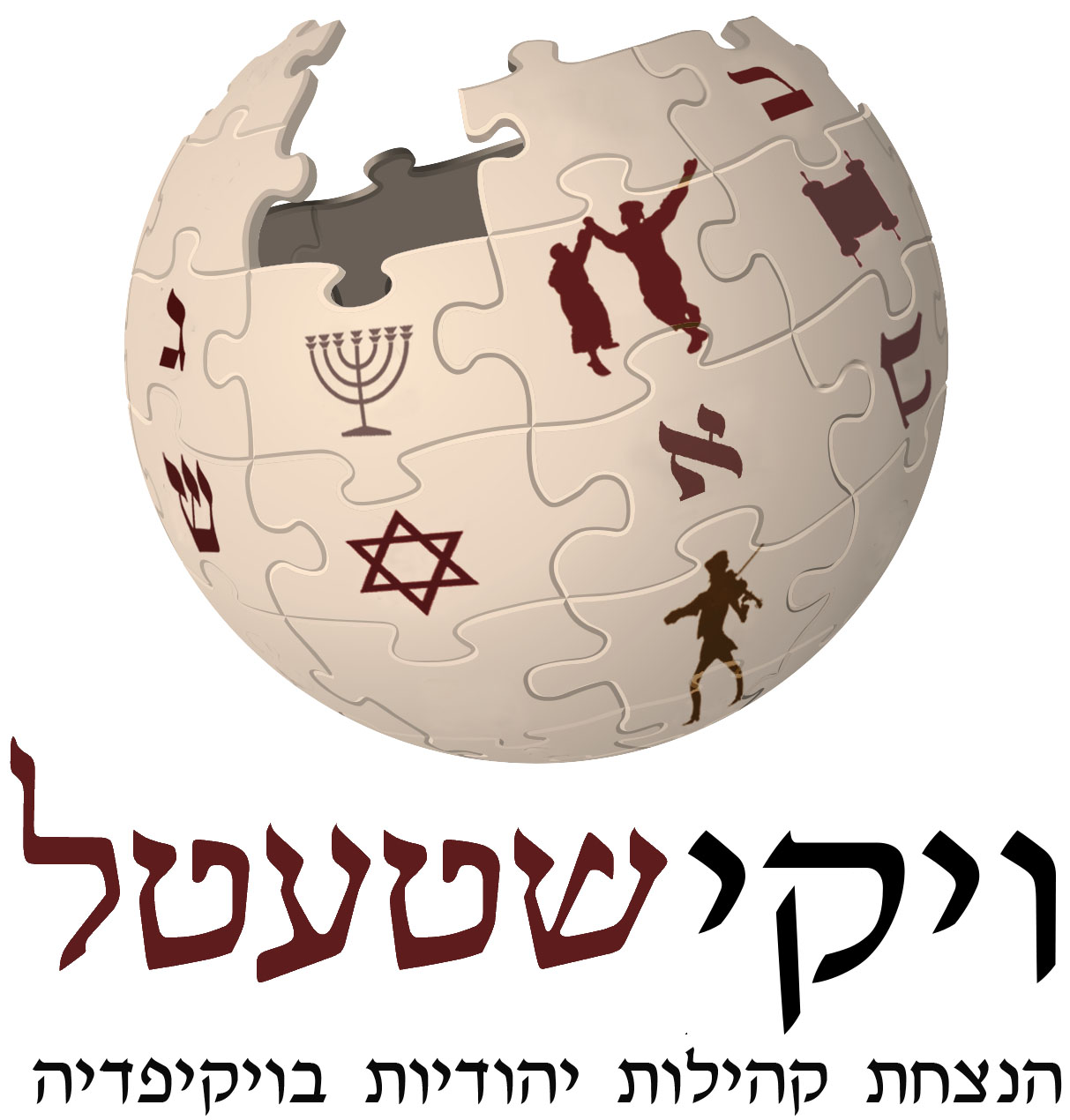
Wikipedia was chosen as the project’s platform due to the fact that it is the world’s biggest encyclopedia, and acts as the most available and accessible source of information for the general population. That being the case, there is great significance to making commemorations using Wikipedia – much more so than using printed books or other digital sources – because they become integrated into the main international database of information.25 Practically speaking, it seems that Wikipedia is the most available means for the private individual to affect the opinions and points of view of the society in which he lives. More so, Wikipedia is continually gaining validity in the eyes of the public as a source of reliable information due to its strive for accepted and reliable sources to be the basis for the information written there, as well as its process of constant peer-review.26 Therefore, being that there is widespread Holocaust denial throughout the internet – especially on social networks –27 it could very well be that in the future Wikipedia will have made the most significant contribution to the preservation of the historical facts surrounding the Holocaust.
The course was developed to offer its participants tools in the field of historical research and genealogy, and to provide writing and editing skills for Wikipedia as well. Participants were required to open a personal account on the Wikipedia website, and to create an entry pertaining to a community that had perished during the Holocaust. The participants generally chose to work on communities that had a connection to their families, that is to say, the community from which their family had originated. The focal point of the course was on processing personal and familial information in order to create a public commemoration. To this end, participants were given tools for processing the memoirs of their family members, and to prepare emotionally for hearing them; tools for identifying relevant information from the participants’ own surroundings, such as objects with sentimental or historical value, photos, and documents or orally transmitted testimonies in the possession of their family or of those living near them. Various tools for genealogical research were also provided.
Additionally, participants were provided with a host of tools in the field of historical research in order to prepare them to work with an array of historical sources; tools that aided in: critical reading of historical documents; knowing what information can – and cannot – be drawn from photographs and audio-visual documentation; analyzing artistic objects and literature as a source of understanding the thoughts and beliefs of individuals from that time period; the analysis of musical compositions as a source of historical documentation of communal heritage; the evaluation of the strengths and the flaws of oral testimonies and memoirs that at some point had been written down on paper; and more.
A significant portion of the program was given in the format of a workshop, which guided the participants through the process of collaborative writing on Wikipedia. A special emphasis was put on providing a profound familiarization with the technology in use and with the potential benefits it offers to mankind in the field of education, especially with regard to teaching.28 In addition to being given active assistance for successful writing and editing in the Wikipedia format, the participants were equipped with tools for critically evaluating the information found on Wikipedia. Moreover, they were given insight into the Wikimedia project, its joint formation, and its various activities.29
BACK
Methodology
This article presents a first look into a program that is still in development. Therefore, an analysis of statistical results and the likes will not appear here. Instead, the article will present a primary examination of the program and the initial impressions of its results and implications.
Research Method
The research was mainly based upon three questionnaires that were distributed during the course, in addition to correspondences with the participants through e-mail, and an analysis of the conversations that took place on the Wikipedia ‘talk page’. The questionnaires were constructed on a qualitative basis, in the form of a written interview, and analyzed in the accepted way for the study of texts and printed or online discourses in qualitative research.30
The first questionnaire examined the amount of familiarity each participant had with Wikipedia, and her general disposition towards it. The questions dealt with evaluating the participants’ amount of personal use of Wikipedia, both active and passive; their usage of Wikipedia for pedagogical needs, and the way in which they provide guidelines for its use to students; and so too their reaction to having Wikipedia included as a central tool for completing the course. The subsequent questionnaires examined the participants’ feelings throughout the process of the program and at its conclusion, with a focus on examining their feelings about the hands-on learning and collaborative learning that took place, as well as regarding the intensive use of Wikipedia throughout the course, and the various tools that the participants were provided in each class. The course’s feedback-form summarizing the entire process also gave the participants an opportunity to relate their feelings about the process they underwent during the learning using a visual illustration accompanied by a written description, which provides a general picture about the feelings that were felt regarding the process.31 The participants who chose to add an illustration essentially came up with a metaphor and its interpretation, enhancing their feedback and helping to surface subconscious understandings that do not necessarily come up during regular discourse.32
Participants
The participants were made up of some twenty-five educators (all female) in the advanced stages of their careers, from a variety of different age groups. Their social backgrounds were varied, and so was their level of familiarity with the world of information technology and media literacy. The program was not designated for a specific social sector, nor was it designed for educators in a specific field. Consequently, the participants consisted of educators from a variety of fields who taught a wide range of ages: from preschool through elementary, up until high school, including some who taught special-education. The participants’ family history with the Holocaust was also varied, with some of them being second-generation survivors, while others were third-generation, and even some without any connection whatsoever.
All of the participants were female. That being said, the group’s homogeneity was not due to research considerations, but rather purely circumstantial; the program at the Jerusalem College was only being offered to women in order to cater to the religious population who participates exclusively in gender-separated programs. It does not seem that this had any significant effect on the results of the study; though there does exist a clear imbalance between the amount of male and female contributors to Wikipedia (males being the majority),33 it does not seem that this had any recognizable effect, except perhaps for contributing to the participants’ doubt about being able to successfully use Wikipedia.34
Ethics
There is a certain ethical complexity that exists in a study taking place in an educational environment,35 and therefore throughout the study steps were taken to refrain from creating an atmosphere that would compromise the learning taking place. In order to preserve a feeling of open learning, as well as a sense of trust and respect between teacher and student, at no point was anything being recorded throughout the course or during the conversations that took place in person or over the phone.36 That being said, there were three questionnaires distributed during the course (as mentioned above) and participants were informed that their answers could be used for study purposes, however they were given the option of answering anonymously.
Throughout the study’s writing and publishing process, all of the participants’ personal details were kept absolutely anonymous. The participant’s input was sought in instances where she had provided information that she might have been uncomfortable having published, and when necessary details were altered or removed completely from the text.37
Limitations
During the program, certain methodological difficulties arose that were unique to this pilot. Some of them were specifically related to the types of individuals who participated in the program, while others pertained to the prospect of applying the program on a larger scale.
A significant challenge that the program faced was the lack of technical knowledge on the part of the participants. Most of the group did not have prior experience with online media in general, and more specifically, with using the Wikipedia interface. Their main experience with Wikipedia was generally from passively reading existing information available on the website. When starting the Wikishtetl course, many of the participants – all of them already employed many years as teachers in the Israeli education system – expressed a feeling of unreliability concerning Wikipedia as a source of trustworthy and certified information. They related how even though they themselves use Wikipedia extensively, they demand of their students “a more serious source,” because in their eyes it “isn’t a reliable source of information.”
Their inexperience did not enable them to properly utilize the Wikipedia platform, and even hindered them from finding creative solutions to the challenges they faced when using it. One of the frustrated participants had wondered: “Why isn’t there a normal toolbar to use, like there is in Microsoft Word?” and related a feeling of exasperation from the technical aspect of the program, as well as a feeling of despair and a lack of self-confidence in her ability to deal with the online platform.
The difficulties of simply dealing with an online interface in general were compounded by some of the issues of actually using the Wikipedia platform, whose terms-of-use are not only unique, but surprisingly also somewhat strict. It should be noted firstly that, contrary to common belief that the discussions taking place behind the scenes about Wikipedia materials are stormy, derisive, and based on ego,38 the discussions that took place relating to this project’s entries were for the most part relevant, respectful, and supportive. That being said, the participants reported having difficulties dealing with the system’s terms-of-use, as well as with fellow Wikipedia editors. One of the participants claimed that “Wikipedia doesn’t like me (!)” because the pictures she had repeatedly attempted to upload to the site were taken down as a result of an apparent violation of copyright laws. The lack of familiarization with the platform led to noticeable frustration among the participants, despite the personal guidance they had received and the efforts that were made to facilitate their use of the unfamiliar system.
Their struggle was made even harder by the fact that the stories and testimonies the participants had gathered needed to be arranged into an encyclopedic format – the format used by Wikipedia. The participants had often included descriptions of the family and communal pictures that they had uploaded, using terms like: ‘…the aunt of...’, ‘…the sister-in-law of…’. Incorporating community stories and family materials into an encyclopedic format proved to be especially challenging and required that close and intensive guidance be given to the program participants throughout the entire process.
BACK
Results and Unique Aspects of the Project
Writing on Wikipedia Serves as a Meaningful Documentation of the Communities That Were Destroyed
One of the unique and meaningful novelties of the project was the way in which each participant’s personal, ancestral, and communal knowledge became woven into the overall story of her community, to become an integral description of it – by presenting one of the many facets of life inside that community. By this means, a communal mosaic of the life, hopes, and dreams of the individuals from within a community become part of public memory. Moreover, documentation and commemoration are made of locations that without this project would in all likelihood never merit them.
Despite the challenge of becoming familiar with a method that is significantly different from those generally in use by educators, using the Wikipedia platform – as described by one of the courses' graduates – was “exhilarating and consuming.” In her own words, she “enjoyed the investigative work,” and is happy she had the opportunity to engage in it professionally and educationally, even describing it as “a dream come true.”
It seems that specifically because the participants’ final product is open to the public and is also less customary in the educational system, there is a higher emotional involvement during the research and writing process. One of the graduates observed that “when we see what is being produced, it is extremely exciting.” Another graduate confessed to “the privilege to be part of the virtual immortalization process” offered by the course. One of the students’ statement that “the product doesn’t just sit on the shelf at home” gives significance to the efforts invested in the research and writing process.
As part of the project, one of the participants depicted the history of the Jewish community in the commune of Nagyfalu, Transylvania – a small community of some fifty families – that disappeared completely in the Holocaust. This commune had almost no information written about it, even in Israel’s Yad Vashem Holocaust Museum website. Through the Wikishtetl project, one of the participants was able to eternalize this community’s story, and along with pictures from personal archives, succeeded in immortalizing the memory of the inhabitants who were, but are no longer.
Another of the program’s participants used the project as an opportunity to execute the will of one of her family’s close friends whose only daughter, Malvina (Malka) Dax from Wiesbaden, Germany, was murdered in the Holocaust along with her husband and toddler.
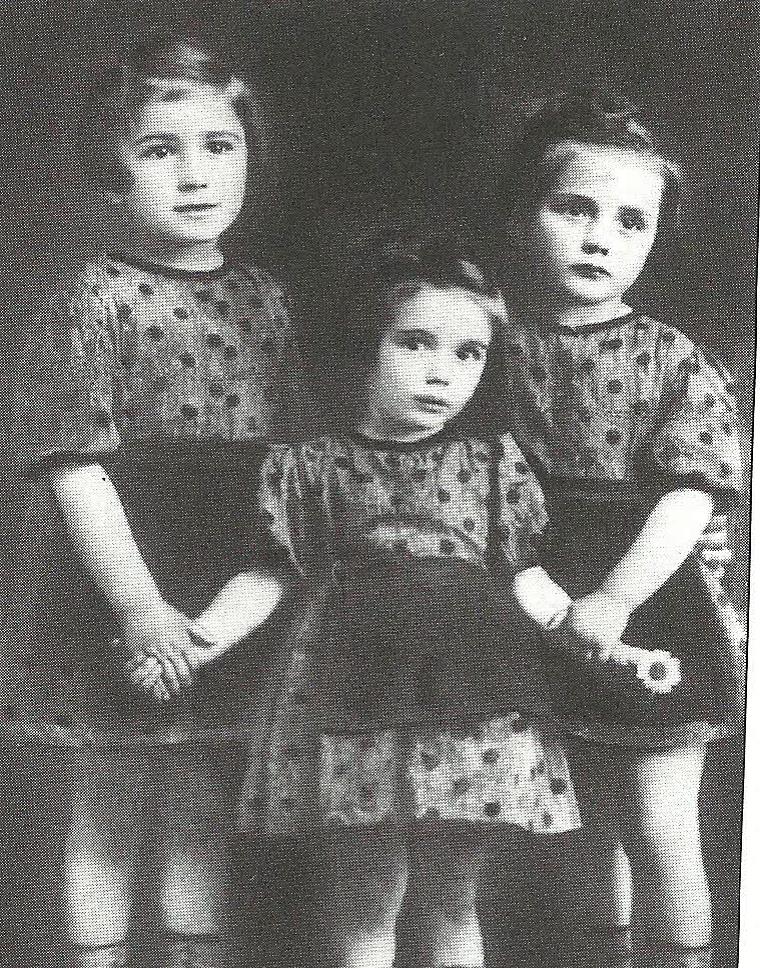
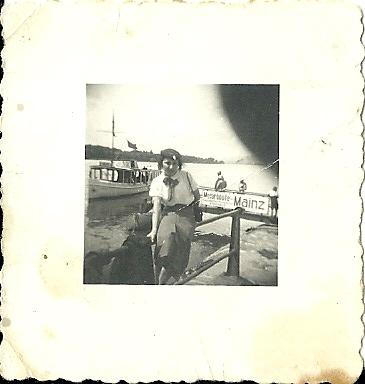
A single tiny picture (Fig. 3), about two centimeters in length and width, remained in her father’s possession, a lonely reminder of his only daughter. Before his passing, he gave the picture to the participant’s mother, asking her that she do something with the picture and his daughter’s memory. For years the picture was tightly preserved by the family, until finally, through the Wikishtetl program the participant was able to “do something” with the picture and immortalize the almost unknown girl.
Wikipedia as a Means of Changing the Social Consciousness
Wikipedia – being a free, open, and collaborative encyclopedia – offers a one-of-a-kind opportunity to create changes in public consciousness regarding the perceptions of historical events and processes, which tend to be described from a specific viewpoint (usually from the perspective of the dominant social group that existed at the time the events occurred or were recorded). It is especially suitable as a setting for projects that allow an individual to express his or her viewpoint, as well as provide him or her with an opportunity to tell his or her story.
The story behind the Wikishtetl entry on the Jewish community of Benghazi, Libya, particularly illustrates this idea. The participants who created this entry had no family connection to that community, but they chose to undertake it just for the sake of equality; they felt that the focus of Holocaust studies is mainly on Eastern-European Jewry and less on North-African Jewry. Thus, they felt the need to tell the story of the Jews from North-Africa who were affected by the Holocaust. The task was particularly challenging for them, since they had no material available from which to start, but their incredible dedication to their topic inspired them to travel all over Israel to locate material and oral testimonies from the community’s descendants.
During an event organized on Holocaust Memorial Day in Israel, the participants presented the fruit of their labor. After they finished their presentation, one of the audience members stood up and informed them that her father was from the Benghazi community, and when he would tell her and her brothers that he was in the Holocaust, they wouldn’t take it so seriously. But now, after hearing their presentation, she understood what he and his family had endured at the time. She added excitedly that during the presentation she had sent text messages to all her family members telling them to read the Benghazi entry on the Wikipedia website so they could finally get a real understanding of their family background.
After finishing her words, another audience member arose and told them that she had shown the Benghazi entry to her father-in-law, who had immigrated to Israel as a child from Benghazi. She described how he had started to cry after reading the entry, understanding for the first time the history of the community from where he came.
These emotional moments exemplify the encyclopedia’s influence on social and historical awareness, and its expression of society’s suppressed and muted voices.39
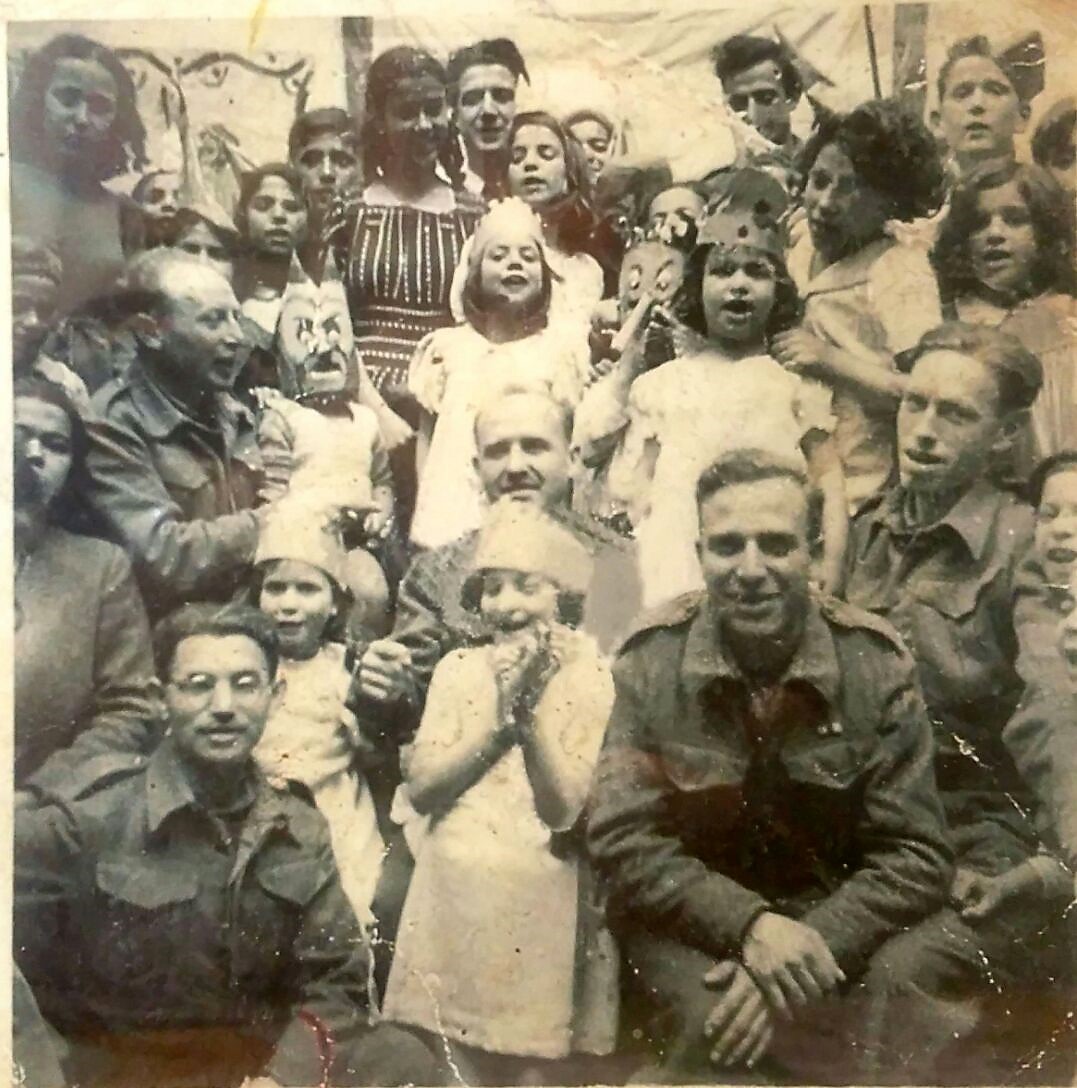
Using a Creative Means to Document Encourages Creative Ways of Finding Information
Due to their active work duties, participants in professional training courses generally feel a burden from course requirements, and hope to minimize in any way possible the amount of work they must do to complete them. The participants of the Wikishtetl course, however, found the creative and research processes to be an exception to the norm, and their enthusiasm was especially notable (at least in comparison to their counterparts learning in other courses) when attempting to locate relevant materials with unprecedented dedication.40 The participants invested long hours attempting to locate information, and traveling around the country to collect materials, pictures, hear testimonies, and document oral testimonies from members of the community’s families and others with whom they had made contact.
One of the participants, whose family roots are from Bialystok, Poland, documented her experience the first time she visited the memorial hall erected by residents of the neighborhood inhabited by Bialystok descendants, in the city of Yehud. Part of her description (quoted here somewhat at length) expresses a special feeling of intensity that accompanied her group while they located materials for documentation:
“There is an atmosphere of intense excitement, mixed with curiosity and heart palpitations… using the camera I’ve prepared beforehand, my finger continuously takes pictures so as to document everything. We shouldn’t miss a thing! I mean, that’s why we’re here…
It was dusk, and the last rays of the sun still shone, enveloping the hall, as if guarding it from all harm. There was a slight blurriness as well, as if to say: the hand of G-d is hovering overhead - protecting it, ensuring that the heritage never be erased.
And inside the hall – the commemoration room… The anticipation intensifies as countless thoughts run through our heads. A spring flowing with reverence fills the body. Our eyes discover a small room packed with books, pictures, objects; some of them on the wall, others lying on the shelves, still others on tables… The pictures are lying in every corner possible, stacked one upon the other. Our eyes struggle to find a point on which to focus; they run from one picture to the next, trying to swallow as much as possible, attempting to find out who are the faces staring at them. The pictures show not only the people of the town – those brave heroes – but also the many sites, streets, alleys, and buildings; each one shaded in grey, white, and black – all of it just intensifying the pain felt in our hearts… ”
After about two hours of touring the sites, and with backpacks filled with knowledge, stories, sites, and especially pictures, we part from Hava [the curator], thank her for consenting to meet with us and show us the memorial hall, and even just for equipping us with such vast knowledge that will allow us to continue to commemorate the eternal memory of the Jewish community of Bialystok.
This slightly poetic description sheds light on the incredible excitement and feeling of awe that were present during the process of locating information and preserving it as an eternal memory. This emotional involvement brought a sense of extreme responsibility to locate materials efficiently – as is exemplified by the very willingness of the participant to travel such a great distance from her hometown just to document and commemorate this community.
The participants’ extreme commitment also led them to develop creative methods for locating information. For example, one of the participants who worked on documenting the Bialystok community sent a message through social media in an attempt to locate immigrants from that community who have in their possession information or pictures. Her advertisement led her to an immigrant, whose family album contained a large number of pictures from his youth in Bialystok which had never been published before, nor given access to the public. Some of the pictures were put in the online entry, which broadened the understanding of the community mosaic that existed then in Bialystok.
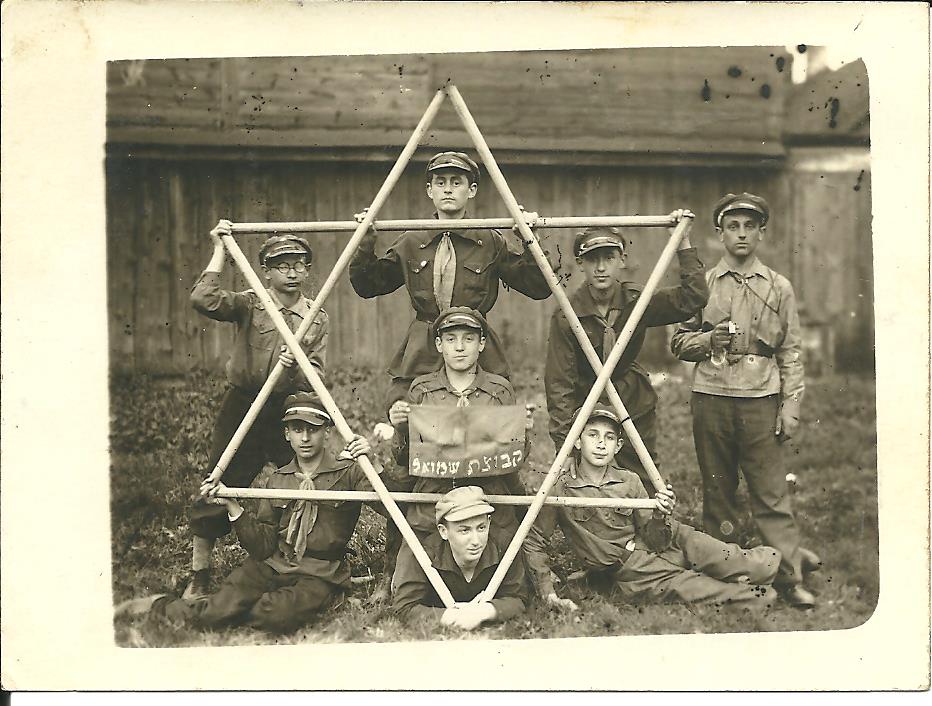
Writing in the Wikipedia Format Encourages Local as well as International Collaboration
The big advantage of working through the Wikipedia platform is its ability to provide a feeling of connectivity and community to those who contribute to the online entries.41 When using Wikipedia as the primary platform for data processing (as opposed to a Word document saved on a private computer), Wikipedia editors from all over the world can become partners in the creative process. In the case of the Wikishtetl project that documents communities whose survivors are dispersed throughout the globe, an online partnership contributes greatly to efficient and synchronized location of materials.
An account of the material-gathering process vis-à-vis the Jewish community of Dabie, Poland, illustrates how the collaborative aspect of Wikipedia greatly contributes to the Wikishtetl project. Before the Holocaust, the Jews of Dabie – whose numbers topped one thousand – comprised about a third of the town’s population. As of today, the town is void of any Jewish residents; in 1941 the town’s entire Jewish population was sent to the Chelmno death camp located nearby.
Almost no remnants remain in Dabie to attest to the existence of the Jewish community that had once constituted such a large part of it. The Jewish cemetery’s gravestones have been turned into construction material. The synagogue (located on the corner of Konopnickiej and Przemysłowa street), which was the focal point of Jewish community life, was converted into a residential residence in 1961, and its interior was renovated and refurbished at the expense of the Jewish community’s history. Its exterior shape however, remains a loyal testimony to its original usage, and remnants of the ancient ark can still be seen in the attic, as well as a sign inscribed with the words: ‘How awe-inspiring is this place – the house of G-d’42 (Fig. 7). Underneath it, remnants of the large exterior windows can still be seen. The entirety of the windows has been sealed off, save for the tops.
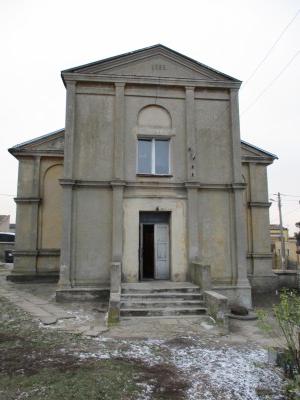
The participant who travelled through the locale as part of a visit to Poland desired very much to commemorate the community and preserve the memory of the building’s original purpose as a house of worship. However, she did not possess any pictures depicting its original appearance, nor did she know much about the locale. Her partially written entry attempting to preserve the community’s memory was viewed by chance by another Wikipedia editor, Eliad Kubicheck, who works under the pseudonym ‘Kovetz Al-Yad’ (in Hebrew). He subsequently uploaded a number of pictures showing the building’s original appearance. The pictures not only enriched the visual knowledge of the building, but also contributed to public records (since the building itself is not being preserved), and even corrected existing information about the synagogue and the community. For example, the year the synagogue had been erected had been estimated to have been in 1890,43 but after close inspection of the pictures depicting the exterior of the hall, it was discovered that the actual year – 1885 – was inscribed on top of the building’s side entrance (Fig. 6).
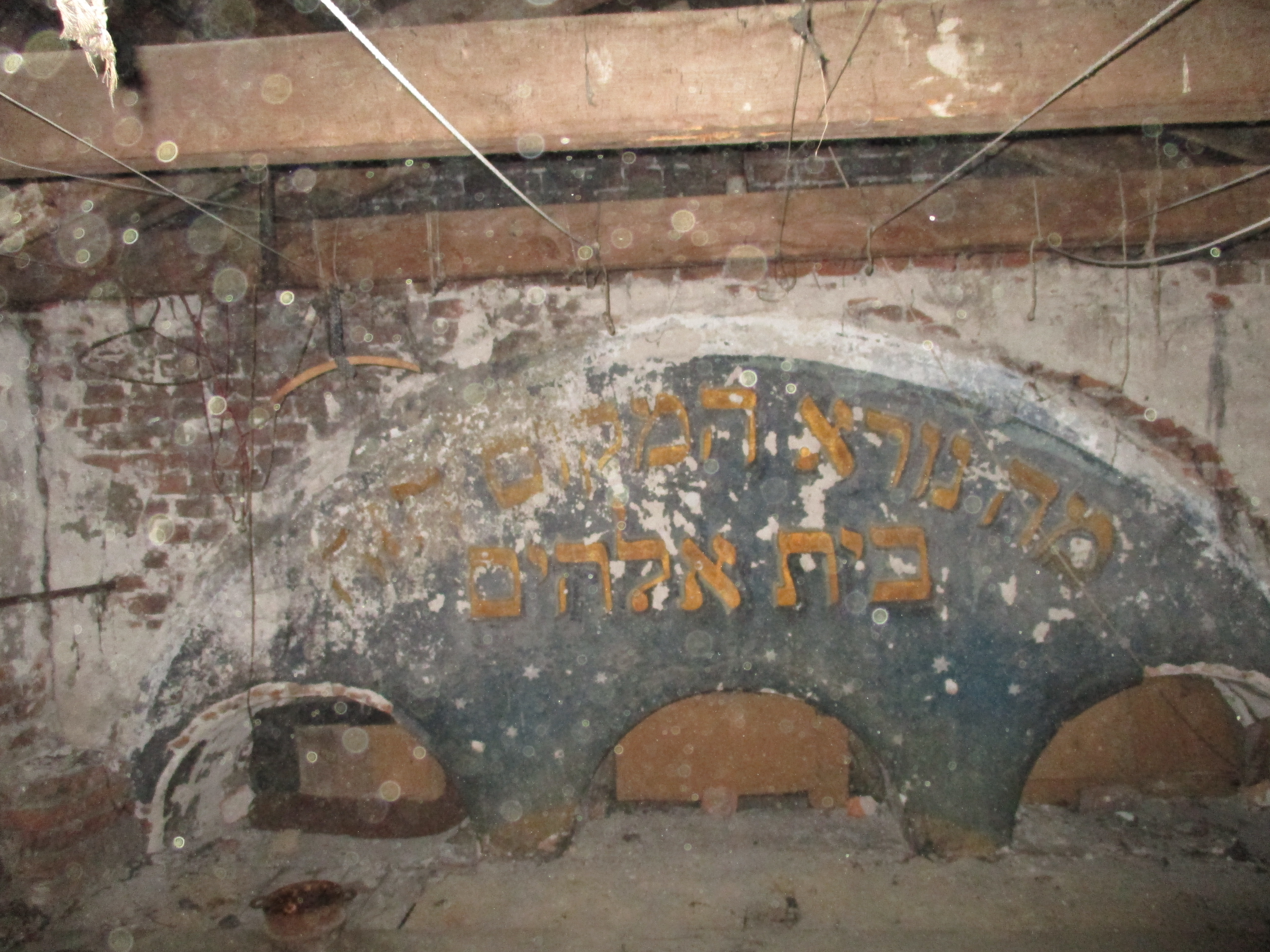
The participants testified to the personal and professional development they gained as a result of the collaborative online experience they underwent. One of the participants remarked on the questionnaire that was distributed towards the end of the program that she found the collaborative learning to be something “very fruitful and fascinating, as a result of working with others.” Another said that one of the interesting things about the program was the “voluntary collaboration by other Wikipedians,” something that struck her as being very special.
‘Getting Closure’: Working with Information Pertaining to Family and Community and Publicizing it Provides Closure to the Individual and to the Nation About the Past
The process of editing and publishing the findings was for many of the participants both an intense and emotional experience of coming to terms with their own family’s history. When starting the project, one of the participants, a third-generation Holocaust survivor, had confessed to her own personal difficulty dealing emotionally with the subject of the Holocaust.44 After completing the project, she expressed a feeling of closure and coming to terms with the trauma of her family’s history, which had been a part of her since childhood – mainly because she was named after one of her family members who had lost all her children during the Holocaust. She described how she had been able to process the memories of her family’s past that burdened her all her life and her feeling afterwards of having gained a certain emotional maturity, as well as an ability to overcome emotional barriers she felt existed between her and her children.
At the conclusion of the program, participants were asked to describe anonymously their experience throughout the entire program through writing, as well as through visual depictions. Two of the participants chose to use an illustration of a tree (Fig. 9 and 10) as a metaphor for the process they went through during the program.45 It is noteworthy that in both of their sketches the tree depicted roots that were noticeably strong and developed, similar to the tree’s branches (one of the illustrations (Fig. 10) even had roots that were noticeably bigger than its branches). One of illustrators made a connection between becoming acquainted with the past and her own personal development, revealing that she felt that by “connecting to her roots, she herself had grown.” The other participant had written the names of the family members whom she had commemorated around the roots of the tree, while the branches bared the words: ‘future generations’, effectively making the advancement of future generations dependent on their connection with the past. “The basis of aspirations is linked to future generations by the faith and stability of the individual” she stated. She concluded with a personal resolution of sorts: “If I remember, my family will remember and my students will remember – the tree of life will forever be growing and evolving…And I will always remember.”
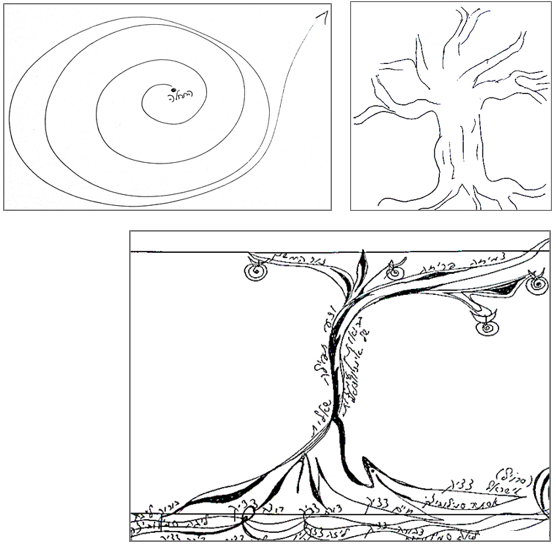
Another participant, who after internalizing her findings indicated having gone through a process of personal growth, submitted a sketch (Fig. 8) of a line spiraling in circles outwards from its center, each circle wider than the last, until finally breaking off to the side. As she herself described it: “We began from a small place deep within ourselves, and succeeded in breaking outwards through ever-widening spirals of knowledge and a capacity to overcome our emotions and believe in our own talents.” Here too the impression is that the work originates from within, but is developed from without, with both sides affecting one another. The expression of the self – the private and the communal – through a publicly-shared channel of knowledge brings about a process of progressing towards completeness and self-wholeness.
Wikipedia use Encourages Learning-Skill Development and Online Collaborate Teaching
As mentioned, most of the program’s participants did not consider Wikipedia to be a potential work tool, which is still at present the general belief amongst teachers.46 However, after working with Wikipedia as a tool to create a meaningful project, they suddenly started to feel as though “the information is so reliable and scrutinized[,] I didn’t realize it beforehand,” and that “this is such a great means to enrich the database of human knowledge.” Their personal use of Wikipedia gave them a new perspective on opportunities for learning, as one of the participants remarked that becoming familiar with the learning-model presented in the course gave her “tools for collaborative learning using Wikipedia…for use in classroom learning.”47
As mentioned, the process of becoming acquainted with the technological tools was complicated and challenging, however despite the difficulties the participants of the program encountered, most of them cited the improvement in their ability to use technology as one of the benefits the program offered. As a result of having undergone the course, they even testified to the change in their outlook on digital learning material and creative tools, going from “something scary and threatening” to something “friendly, enrichening, and appealing.” Two of the participants added an illustrative graph to the feedback form as a description of the personal process they underwent. In the middle of the graph was a drop, and only subsequently was there a drastic increase. They explained that the graph was meant to relay their experience with the technological aspect of the program: One of them referred to the uncertainty of having to do the online task, and the other referred to the struggle she had providing proof to Wikipedia that she had received consent to upload the pictures she wanted to use, as well as with dealing with other Wikipedia editors’ who intervened in her entry. In the end though, their low led them to a tremendous sense of personal and professional growth, which apparently was partially a result of their success dealing with the unfamiliar tool.
Working with Wikipedia – the largest encyclopedia in the world – contributed to the participants’ sense of personal empowerment as well. As one of them wrote at the end of the course: “Being able to create an entry on Wikipedia surprised me[,] I didn’t think I was capable of doing it.” Another remarked: “I’m proud that I learned what Wikipedia is all about.”
BACK
Conclusions
It seems that through the Wikishtetl project, for the first time – at least in the field of education and instruction – Wikipedia was used not just as a tool for sorting existing information and making it more publicly available,48 but also as a tool to create new information and share it with the public. It seems as though the main causation for the extreme mobilization, enthusiasm, and emotional involvement in the program stemmed from the feeling of obligation felt by the participants to preserve information that was at risk of forever being lost.
It would seem that further thought is required concerning how to facilitate introducing the Wikipedia interface with those unfamiliar with it, and how support must be given to them during their first attempts at using it. This point is critical for programs that integrate Wikipedia use into their curriculum, as many students do not have the availability needed to become gradually familiarized with the Wikipedia format.
To this end, it is recommended that a widespread application of this program should probably be done within younger age groups, such as elementary or high school students; it can be expected that they will have less difficulties dealing with the Wikipedia interface due to their higher level of media literacy.49 When creating a course directed to senior educators or pensioners, a significant amount of time must be dedicated to familiarizing the participants with Wikipedia and with collaborative work, while receiving close support by the instructor.
Being that Israel is a multicultural society, there is a certain social complexity concerning Holocaust education since not all groups living in Israel were affected by this central chapter in the nation’s history.50 The friction between the different denominations also exists because the media does not usually make mention of the Holocaust experiences endured by North-African Jewry.51
During the program an attempt was made to bridge this gap by allowing the participants to choose any Jewish community to document, regardless of whether or not it was affected by the Holocaust. Nevertheless, for one reason or another, all of the participants decided in practice to commemorate a community that was obliterated in the Holocaust. It seems that this was partially due to the great significance of choosing to commemorate a community that was so tragically destroyed.
With regard to expanding the program and integrating it into the education system, it seems necessary to dedicate a domain for commemoration on Wikipedia separate from Wikishtetl that will meet the needs of the various groups and communities in Israel who identify with other ethnicities. This will provide a domain to voice the stories of Asian and African ethnicities whose communities disappeared after immigrating to Israel, as well as the unique history and culture of various other groups who settled in Israel, such as the Druze and others.
It should be noted that already this year (2018), as part of the application of this program for students obtaining a BED at the Efrata College in Jerusalem, a new section has been added to the project’s website: “Jewish Communities from Around the World,” where students are invited to commemorate Jewish communities that no longer exist, regardless of whether or not they had a connection to the events of the Holocaust – such as the communities from the Arab states, who mainly perished as a result of the hostility of local populations.52 As such, some of the students chose to commemorate the story of communities from Iran and Morocco, as well as two communities from Ethiopia, which remains a country whose presence is lacking in Israeli history and culture.53
Being open and collaborative, the online Wikipedia platform greatly facilitates to document and commemorate communities which no longer exist, emphasizing the human and communal mosaic that once was. By collecting open and collaborative information, the knowledge of certain communities and tribes can be gathered and preserved with greater ease.
On a wider, more global scale: Can we turn Wikipedia into a medium where every individual can write his or her story, connecting it to the story of all mankind? Can we take part in using Wikipedia to successfully preserve the memory of the communities and traditions that are no longer, in order that we may continue to learn from them? Will the largest encyclopedia on earth become the greatest source for creating and preserving collective knowledge? It seems that taking steps in this direction may have far-reaching implications for the future of sharing and documenting the memory of all.